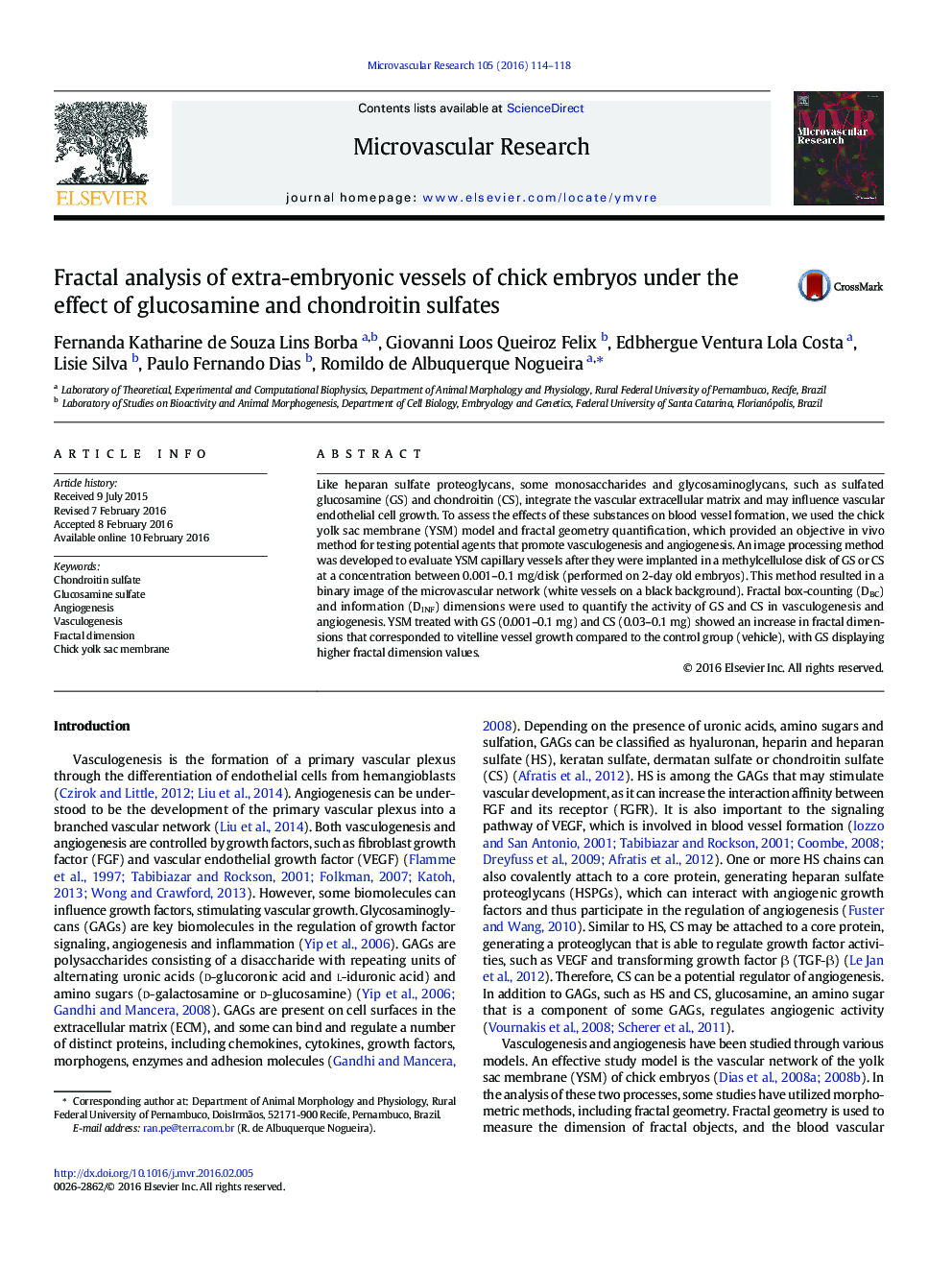| Article ID | Journal | Published Year | Pages | File Type |
|---|---|---|---|---|
| 8341092 | Microvascular Research | 2016 | 5 Pages |
Abstract
Like heparan sulfate proteoglycans, some monosaccharides and glycosaminoglycans, such as sulfated glucosamine (GS) and chondroitin (CS), integrate the vascular extracellular matrix and may influence vascular endothelial cell growth. To assess the effects of these substances on blood vessel formation, we used the chick yolk sac membrane (YSM) model and fractal geometry quantification, which provided an objective in vivo method for testing potential agents that promote vasculogenesis and angiogenesis. An image processing method was developed to evaluate YSM capillary vessels after they were implanted in a methylcellulose disk of GS or CS at a concentration between 0.001-0.1Â mg/disk (performed on 2-day old embryos). This method resulted in a binary image of the microvascular network (white vessels on a black background). Fractal box-counting (DBC) and information (DINF) dimensions were used to quantify the activity of GS and CS in vasculogenesis and angiogenesis. YSM treated with GS (0.001-0.1Â mg) and CS (0.03-0.1Â mg) showed an increase in fractal dimensions that corresponded to vitelline vessel growth compared to the control group (vehicle), with GS displaying higher fractal dimension values.
Related Topics
Life Sciences
Biochemistry, Genetics and Molecular Biology
Biochemistry
Authors
Fernanda Katharine de Souza Lins Borba, Giovanni Loos Queiroz Felix, Edbhergue Ventura Lola Costa, Lisie Silva, Paulo Fernando Dias, Romildo de Albuquerque Nogueira,
